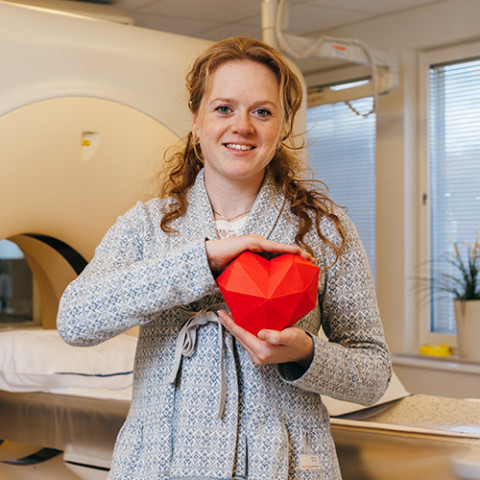Blog
13 January 2022
Marilyn Monroe and the promise of AI
At some point, every one of us has tried playing around with filters and settings to tweak the pictures on our phones. Even if we don’t know what we’re actually doing, we enjoy moving sliders up and down to see how changing the contrast, brightness, and colours improves the picture.
AI can be trained to do exactly the same. In fact, we are already using AI to boost image quality without even knowing it. Instagram filters are based on AI, for instance. Newer smartphones also have AI-enhanced camera functionalities built right in. Taking things to the next level, entire classic movies can be restored, colourised, and enhanced with these algorithms.
If an old Marilyn Monroe movie can benefit from AI… can medical imaging, too? The answer is “yes, absolutely”!
Right now, at Unilabs Sweden, we are trying out a tool that enhances images using cutting-edge deep learning algorithms. Using this tool in fast-scan protocols we aim to enhance the image quality until we meet or even surpass standard-of-care level. The result is less time spent per exam, which increases capacity – and also allows our patients to spend less time inside the MR scanner. Furthermore, the AI enhancements can help us lengthen the useful life of our older scanners and still get excellent results.
The tool is going through a live-test phase at three hospitals in Sweden (Haga, Odenplan, and Hotorget). For three months we will be scanning using different AI enhanced protocols. A group of radiologists will review the resulting images, comparing them to non-enhanced ones and providing feedback on the quality. They have the final say-so on the routine usage of AI-enhanced imaged protocols.
So far, we have received positive feedback for all the anatomies analysed including knee, spine, and brain; next up are prostate, shoulder and pelvis. There is a reduction of the time spent per scan. In fact, we are seeing efficiency gains of up to 50%, with equal or better quality than the standard-of-care protocols. Even for those protocols where the efficiency gain is not evident, the image quality is definitely improving, as our radiologists confirm.
Getting this up and running hasn’t been a walk in the park. Setting up complex infrastructure to handle large amounts of data and establishing support routines to ensure scans flow seamlessly from scanner to the PACS imaging system has posed challenges. But thanks to our technicians and partnering engineers, we have overcome all hurdles.
The test in Sweden is only the start. We’re looking forward to bringing this exciting technology to all Unilabs countries. Watch this space.
It’s amazing to think that the same technology that makes our food look great on Insta can also help contribute to an accurate diagnosis – and save lives.

